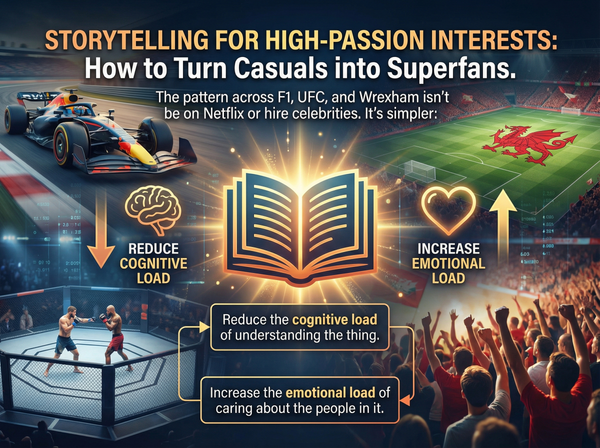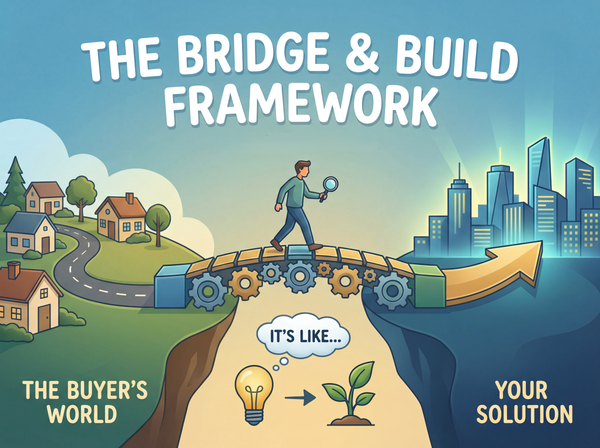The Myers-Briggs Type Indicator (MBTI): Personality Assessment

In sales and marketing, understanding your audience is paramount.
Myers-Briggs Type Indicator is often used in team building and personal development.
While DISC focuses on how people act and communicate in their environment, MBTI delves into how people inherently perceive the world and make decisions, revealing their underlying preferences and motivations.
What is the Myers-Briggs Type Indicator (MBTI)?
The MBTI is a self-report questionnaire designed to indicate different psychological preferences in how people perceive the world and make decisions.
Developed by Isabel Myers and Katharine Briggs during World War II, it's based on Carl Jung's theory of psychological types.
The MBTI identifies preferences across four dichotomies, leading to 16 unique personality types:
- Where you focus your energy:
- Extraversion (E): Energized by interacting with people, engaging in group activities, and focusing on the external world. They tend to be action-oriented and expressive.
- Introversion (I): Energized by quiet reflection, internal experiences, and focusing on their inner world. They tend to be thoughtful and reserved.
- How you perceive information:
- Sensing (S): Focus on concrete facts, details, practical realities, and what is real and tangible. They rely on their five senses.
- iNtuition (N): Focus on patterns, possibilities, abstract concepts, future implications, and underlying meanings. They rely on their sixth sense or insights.
- How you make decisions:
- Thinking (T): Make decisions based on logic, objective analysis, impersonal criteria, and cause-and-effect reasoning. They prioritize fairness based on principles.
- Feeling (F): Make decisions based on values, personal impact, empathy, and maintaining harmony. They prioritize fairness based on individual circumstances and impact on people.
- How you prefer to live your outer life:
- Judging (J): Prefer a planned, organized, structured, and decisive approach to life. They like to have things settled and completed.
- Perceiving (P): Prefer a flexible, spontaneous, adaptable, and open-ended approach to life. They like to keep their options open and adapt as things unfold.
Combining one preference from each dichotomy creates a four-letter type, such as ESTJ, INFP, or ENTJ.
Sharpening Your Sales Acumen: Practical Adaptations
While you wouldn't ask a prospect to take an MBTI test, understanding these preferences can help you infer their likely approach and tailor your sales strategy.
This begins with self-awareness: understanding your own MBTI type helps you recognize your natural communication habits and identify where you might need to flex your style to better connect with your prospect.
Let's look at how to make micro-adjustments in your sales conversations:
- Understanding Prospect Motivations & Decision-Making:
- E vs. I (Energy Focus):
- An Extraverted prospect will likely prefer an engaging, interactive presentation, comfortable with talking through ideas, and might even initiate side conversations. Don't be afraid of direct questions and energetic dialogue. They might appreciate a phone call over an email.
- An Introverted prospect, on the other hand, might prefer to receive information beforehand, process it quietly, and then engage in a more focused, perhaps one-on-one discussion. Respect their need for reflection and avoid overwhelming them with too much external stimulation. Email or a well-structured agenda might be preferred.
- Micro-Adjustment (Opening a Call): For an E, start with a bit of engaging conversation, ask about their day, or a recent relevant event. For an I, get straight to the point and respect their time, perhaps offering to send a detailed follow-up.
- S vs. N (Information Perception):
- A Sensing prospect will be deeply interested in the concrete facts, specific features, proven results, and immediate practical applications of your product or service. They want to know what it is and what it does. Provide data, case studies, and practical demonstrations.
- A iNtuitive prospect will be more interested in the future possibilities, the big picture, the underlying patterns, and the innovative concepts. They want to know what it means and where it can lead. Engage them with visionary ideas, long-term impact, and potential for growth.
- Micro-Adjustment (Presenting Solutions): For an S, demonstrate specific features and show how they work in detail. For an N, paint a picture of the future benefits, trends, and possibilities.
- T vs. F (Decision Making):
- A Thinking prospect will respond well to logical arguments, objective data, ROI calculations, and impersonal criteria. They prioritize efficiency, effectiveness, and fairness based on principles. Present cold, hard facts and clear advantages.
- A Feeling prospect will be more swayed by how the solution impacts people, aligns with their values, fosters positive relationships, and creates harmony. They prioritize empathy and values-based decisions. Share testimonials that highlight positive experiences or social impact.
- Micro-Adjustment (Handling Objections): For a T, address objections with logic, data, and a calm, rational tone. For an F, acknowledge their concerns empathetically, and focus on how the solution benefits people or aligns with shared values.
- J vs. P (Outer Life Approach):
- A Judging prospect appreciates a structured sales process, clear agendas, defined deadlines, and decisive next steps. They like to have things settled and organized. Be punctual, provide clear timelines, and follow up efficiently.
- A Perceiving prospect might prefer more flexibility in the sales process, be open to exploring multiple options, and may need more time and space before making a final decision. They value adaptability and spontaneity. Allow for exploration and avoid high-pressure tactics.
- Micro-Adjustment (Closing): For a J, propose clear next steps, timelines, and a definitive close. For a P, offer choices, be open to further discussion, and allow them space to decide without undue pressure.
- E vs. I (Energy Focus):
- Tailoring Your Pitch:
- When selling to a potential ISTJ (often practical, factual, and organized), focus on the reliable features, proven track record, and how your solution streamlines processes. Provide specific case studies and testimonials with concrete data.
- For an ENFP (enthusiastic, creative, and people-oriented), highlight the innovative aspects, the positive impact on their team, and engage them in a collaborative brainstorm of possibilities. Emphasize how it aligns with their vision and potential for positive change.
Elevating Your Marketing Strategy with MBTI Insights
While you can't segment your email list by MBTI type directly, understanding these preferences helps you craft more resonant marketing messages and campaigns that speak to broader psychological needs:
- Content Creation & Messaging:
- Sensing-focused Content: Case studies with specific metrics, detailed product specifications, step-by-step how-to guides, FAQs, and testimonials emphasizing concrete, tangible results.
- iNtuitive-focused Content: Visionary blog posts, trend analyses, thought leadership pieces, exploring future possibilities, innovative solutions, and the why behind your offering.
- Thinking-focused Content: Whitepapers with data, comparative analyses, logical arguments for efficiency, cost savings, and clear competitive advantages. Use precise language and avoid emotional appeals.
- Feeling-focused Content: Stories about customer success (with emotional resonance), community initiatives, testimonials emphasizing positive experiences, strong relationships, and shared values. Highlight the impact on people.
- Marketing Channel & Format Selection:
- Extraverted audiences might respond well to interactive webinars, live events, social media polls, and highly engaging video content.
- Introverted audiences might prefer in-depth articles, detailed email newsletters, whitepapers, or recorded webinars they can consume at their own pace and in private.
- Judging types appreciate clear calls to action, well-defined campaign structures, and predictable content releases.
- Perceiving types might enjoy more open-ended content (e.g., surveys asking for opinions), exploratory guides, or content that offers multiple options and flexibility.
- Website Design & User Experience (UX):
- Ensure your website caters to different preferences. Provide clear, concise calls to action and quick summaries for those seeking efficiency (J/T).
- Offer easily accessible, in-depth resources like whitepapers and technical specs for those who crave detail and analysis (C/T).
- Feature prominent testimonials, about us sections highlighting company values, and community engagement for those valuing connection (F).
- Include engaging visuals, interactive elements, and future-oriented language for those drawn to possibilities (N).
Important Caveats: Using MBTI as a Guide, Not a Label
While a powerful tool for observation and understanding, it's vital to approach MBTI with a nuanced and responsible perspective:
- Preferences, Not Abilities: MBTI describes innate preferences in how people gain energy, take in information, make decisions, and organize their outer life. It does not measure skills, intelligence, or capability. An Introvert can be a highly effective public speaker, and a Feeling type can be incredibly logical.
- Self-Reported & Developmental: The results are based on self-perception, and an individual's reported type can sometimes shift over time or with personal development. People can also flex their preferences depending on the situation or role.
- Common Sales Missteps to Avoid:
- Overwhelming an Introvert: Don't dominate the conversation or push for immediate answers; give them time and space for reflection.
- Ignoring Facts for a Sensor: Don't get lost in abstract concepts or vague promises; provide concrete examples and demonstrations.
- Being Impersonal with a Feeler: Don't focus solely on logic and ignore the human element; show how your solution positively impacts people and relationships.
- Being Unstructured with a Judger: Don't leave next steps ambiguous; provide clear agendas, timelines, and follow through on commitments efficiently.
The Takeaway
Understanding the different psychological perspectives offered by the MBTI can enrich your view of prospects and customers. While it doesn't replace active listening and empathy, the MBTI framework provides a deeper understanding of fundamental human preferences.
By integrating these insights into your sales conversations and marketing strategies, and by understanding your own preferences to consciously adapt your approach, you'll be better equipped to tailor your messaging, resonate with diverse personalities, and ultimately, achieve greater success in connecting with your audience.
Keep Crushing!
- Sales Guy


